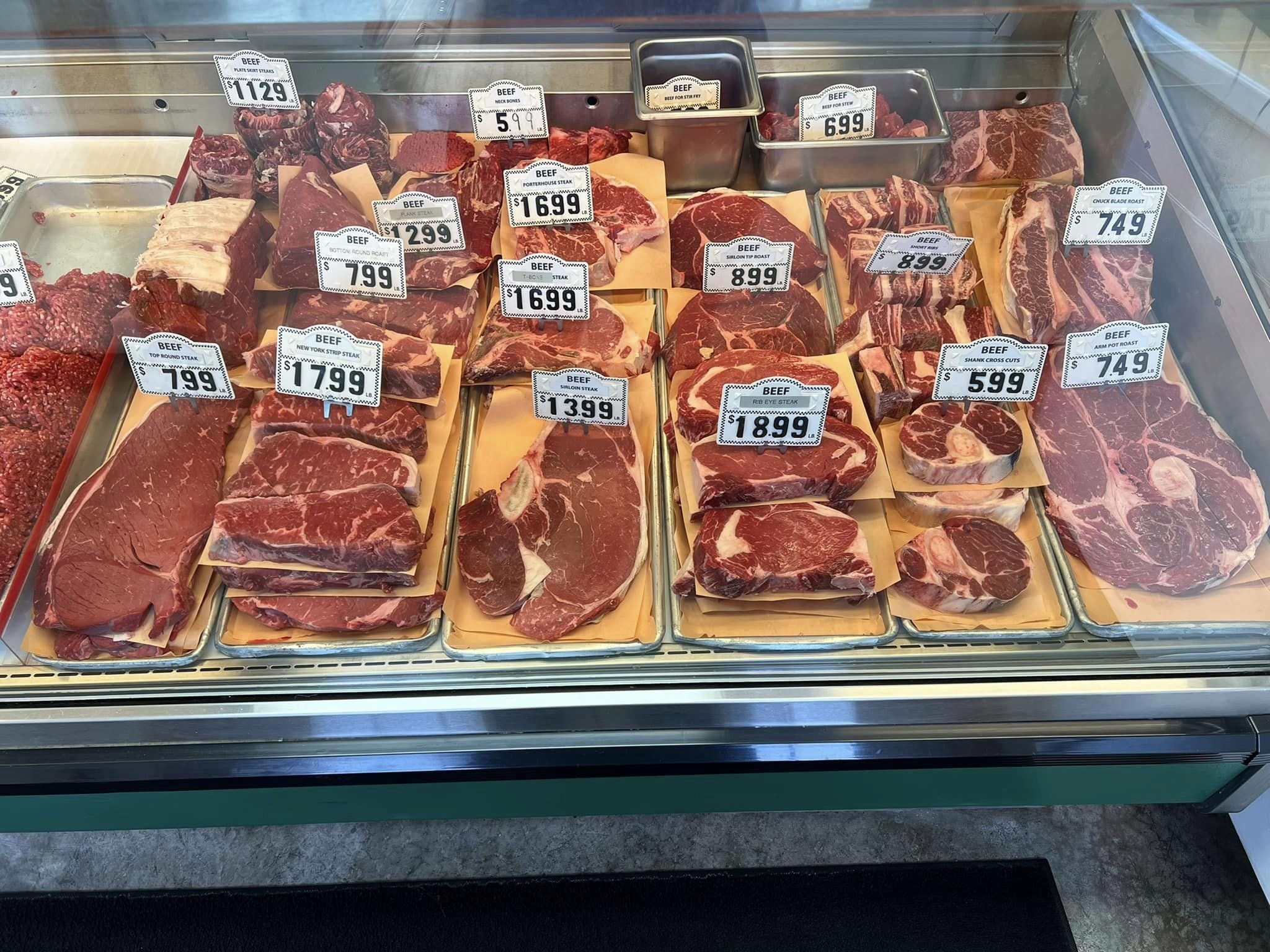How to Choose the Perfect Cut of Meat From a Trusted Meat Market
Selecting the perfect cut of meat from a relied on meat market requires a thoughtful strategy that balances high quality, culinary purpose, and budget. Understanding the numerous kinds of meat and their particular cuts is important, as is engaging with your butcher to obtain understandings right into sourcing and preparation. Observing attributes such as shade, appearance, and marbling can further lead your decision. As you take into consideration these aspects, it ends up being clear that the nuances of your selection might dramatically affect the outcome of your meal, prompting a much deeper exploration of the criteria that really issue.
Comprehending Meat Cuts


For circumstances, the tenderloin is valued for its buttery structure and minimal connective tissue, making it suitable for fast cooking techniques such as barbecuing or pan-searing. On the other hand, harder cuts like the brisket or shank take advantage of slow-moving food preparation strategies to damage down collagen, producing rich and savory results.
Additionally, the fat material of a cut plays an important duty in taste profile and dampness retention throughout food preparation. Cuts with higher fat content, such as ribeye, use a more durable flavor, while leaner options, like sirloin, may call for cautious preparation to avoid dryness (bagley meat market edwardsville il). Understanding these nuances enables informed options that boost cooking productions, making certain that each recipe showcases the most effective top qualities of the chosen meat
Elements to Consider
When choosing the excellent cut of meat, numerous important factors enter into play that can substantially impact the final recipe. Consider the type of meat you want-- beef, pork, lamb, or fowl-- as each deals one-of-a-kind flavors and appearances. The details cut within that classification is similarly important; for instance, ribeye supplies abundant marbling, while tenderloin gives a lean, buttery texture.
An additional factor is the food preparation method you prepare to utilize. Cuts appropriate for barbecuing, such as T-bones or sirloins, differ from those far better matched for slow-moving cooking, like chuck roasts or shanks. In addition, freshness is extremely important; always pick meat with a lively color and company structure, signaling high quality and correct handling.
In addition, take into consideration the source of the meat. A relied on meat market often supplies in your area sourced, hormone-free, and grass-fed choices, which can boost flavor and nutritional worth. Finally, your budget will lead your option. Premium cuts might use extraordinary preference, however there are likewise cost-effective alternatives that, when prepared properly, can yield tasty results. Stabilizing these variables will certainly help you choose the perfect cut for your cooking requirements.
Inquiries to Ask Your Butcher
A butcher's know-how can be vital when choosing the suitable cut of meat for your culinary undertakings. Start by asking about the source of the meat.
Following, ask regarding the various cuts offered for the kind of meat you prefer. A knowledgeable pop over to this site butcher will explain the subtleties of each cut, assisting you select one that matches your food preparation technique and preferred outcome. Don't hesitate to ask about the best food preparation methods for a details cut; butchers usually have tips that can enhance your recipe.
It's additionally prudent to ask regarding the meat's freshness. A good butcher will certainly be anxious to share their experience and recommend cuts that will certainly delight find more your palate. Involving your butcher with these questions can dramatically improve your meat selection experience.
Acknowledging Quality Meat

Structure is one more crucial factor; top quality meat need to feel solid and a little resilient to the touch. Avoid any kind of cuts that really feel slimed or exceedingly completely dry, as these can indicate wasting or improper storage space. Additionally, smell plays a vital role; fresh meat must have a clean, neutral fragrance, while any repulsive or sour smells are warnings.
Finally, think about the source. Purchasing from a trustworthy meat market, where the meat's beginning is recognized, can make sure better criteria. By concentrating on these indicators-- shade, marbling, texture, smell, and resource-- you can with confidence choose cuts that will elevate your cooking and eating experience.
Cooking Techniques for every Cut
Selecting the right cooking method is vital for optimizing the taste and tenderness of each cut of meat. Different cuts possess unique attributes that dictate one of the most suitable cooking methods.
For tender cuts, such as filet mignon or ribeye, dry warm techniques like barbecuing, broiling, or pan-searing are suitable. On the other hand, tougher cuts, such as chuck or brisket, advantage from wet heat methods, including braising or slow-moving cooking.
Pork chops and chicken breasts are flexible and can be cooked utilizing both completely dry and wet techniques. While grilling or roasting can Recommended Site yield scrumptious results, poaching or sautéing can keep moisture and inflammation. For lamb, approaches like toasting or braising are suggested, as they enhance the meat's durable taste.

Conclusion
In verdict, picking the optimal cut of meat from a reliable meat market demands an extensive understanding of meat cuts and consideration of numerous variables, consisting of source, top quality, and cooking techniques. Involving with the butcher with targeted queries can yield beneficial understandings and suggestions customized to details cooking needs. Prioritizing both quality and budget will certainly boost the total gastronomic experience, ensuring that the selected cut satisfies assumptions in both taste and preparation.
Comments on “This local meat market offers fresh, locally-sourced meats for all your needs.”